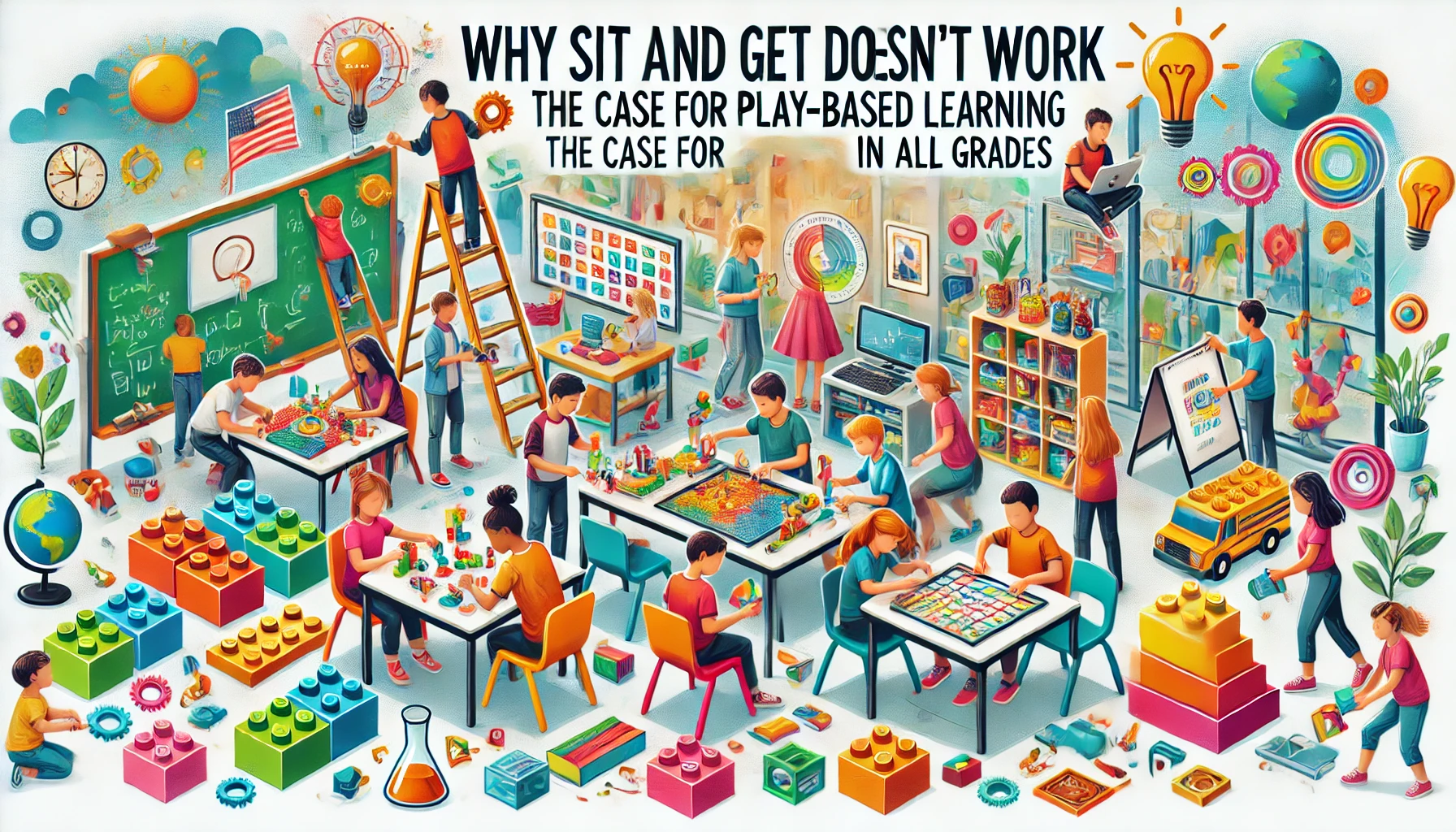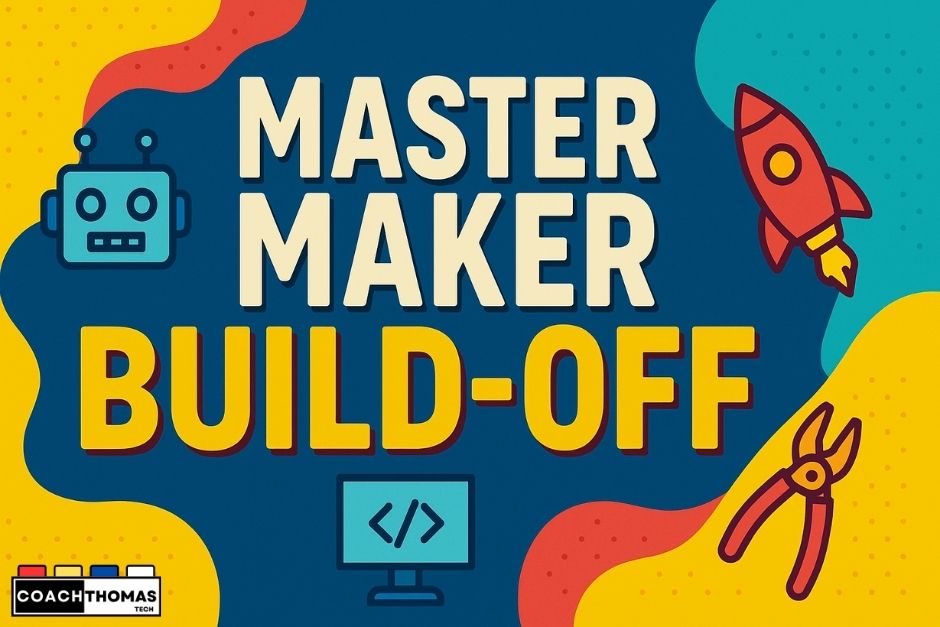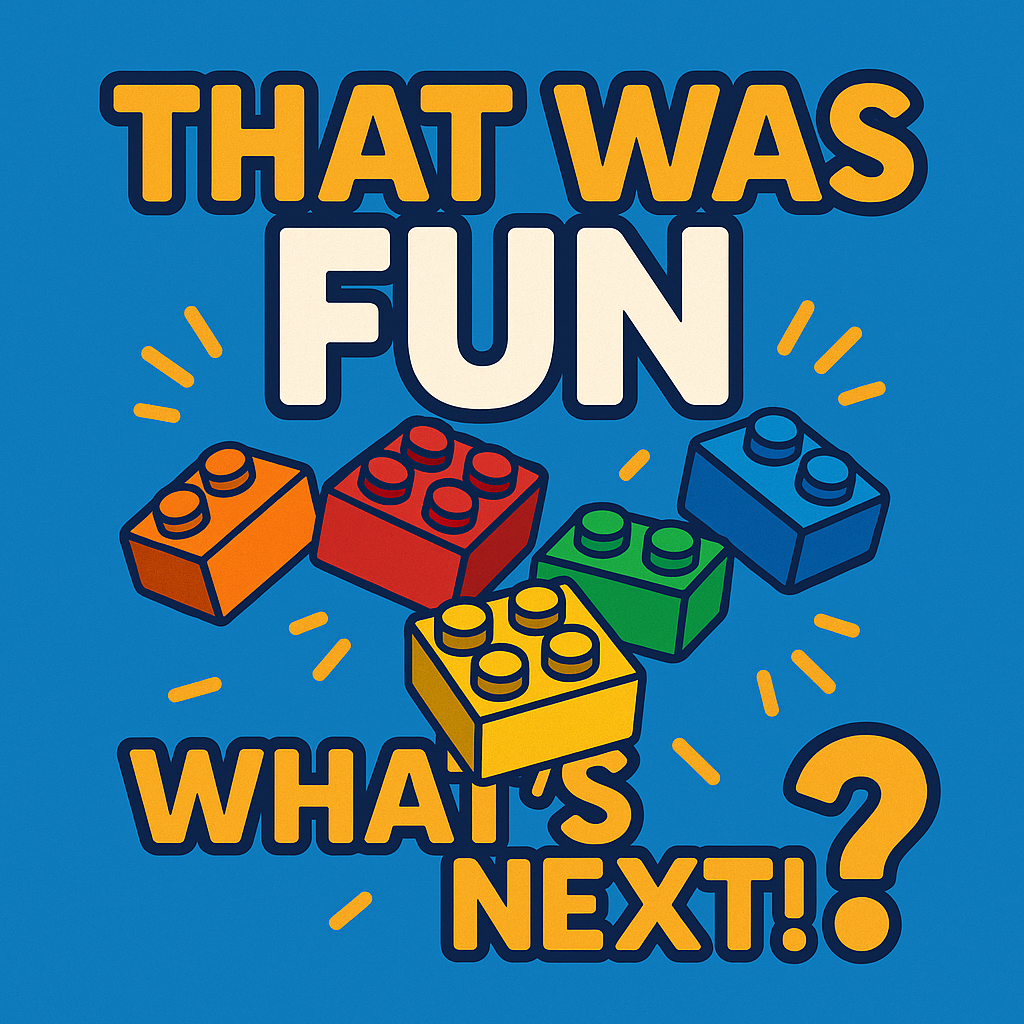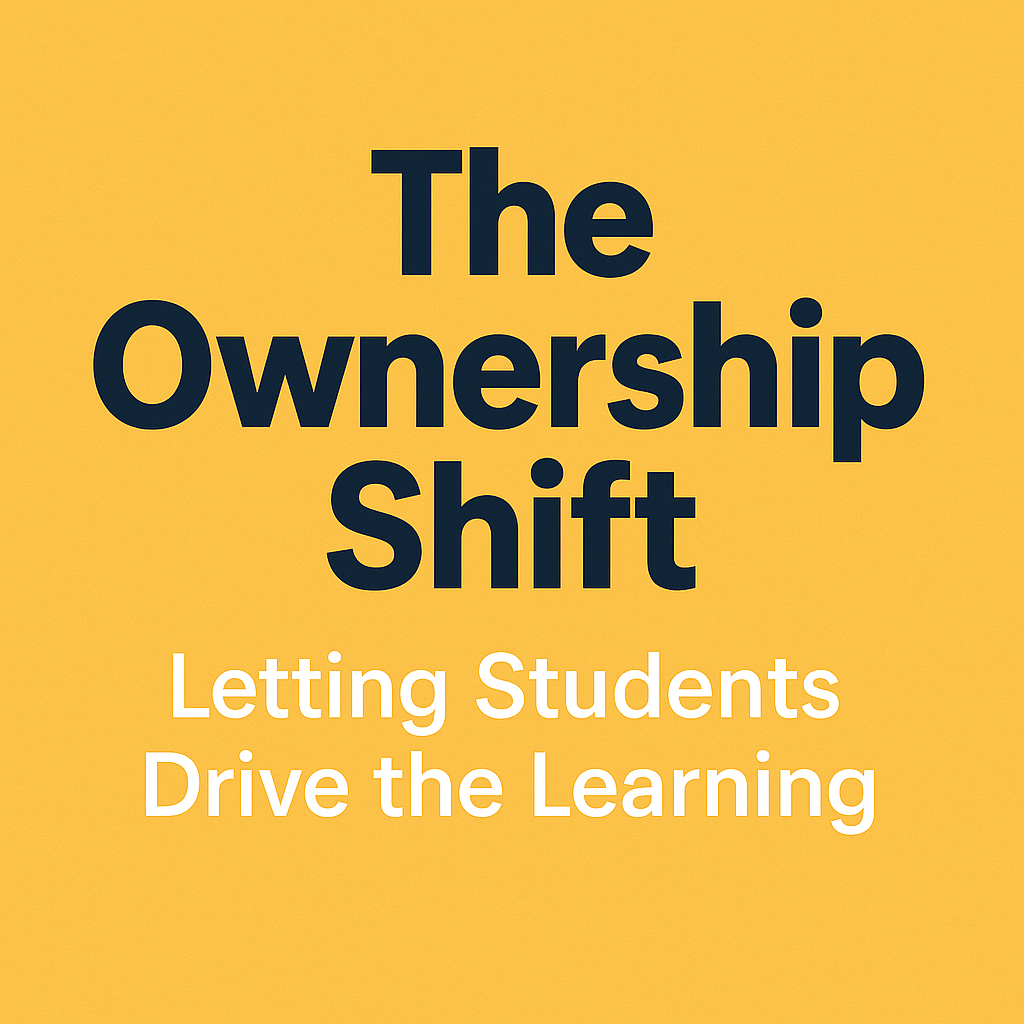For years, traditional education has followed a familiar pattern:
📖 Teachers talk, students listen.
📝 Information is delivered, memorized, and tested.
🔄 Rinse and repeat.
We’ve all experienced this ‘sit and get’ approach. But here’s the hard truth:
🛑 It doesn’t work.
Students may remember facts long enough to pass a test, but how much of that knowledge actually sticks? How often do they truly engage, explore, and create—or are they simply regurgitating answers without real understanding?
The reality is that passive learning doesn’t build deep knowledge, critical thinking, or problem-solving skills. If we want education to be more than just test scores, we need to shift how we teach.
And that’s where play-based learning comes in.
The Problem: Why ‘Sit and Get’ Fails
Research shows that the average student tunes out after 10–15 minutes, yet lectures often last 40–80 minutes. Add in digital distractions, and students check out quickly.
But learning is more than memorizing and repeating information. Real learning happens when students can connect knowledge to real-life situations. The traditional lecture-and-notes model doesn’t allow for this transfer of knowledge.
Sitting in a classroom, passively receiving information, is not how the brain works best. It leads to boredom, frustration, and disengagement. This, in turn, results in poor grades, classroom disruptions, and lack of motivation.
And honestly? I don’t blame the students.
If you’ve ever sat through a dull professional development session, struggling to stay engaged, you know exactly how they feel. If we don’t like it as adults, why do we expect students to thrive under the same conditions?
Think about a time when you learned something new by doing it instead of just hearing about it.
That’s how real learning happens.
The Solution: Play-Based Learning as an Alternative
When students are actively involved in their learning, they remember concepts better. Instead of sitting passively, they play with ideas, experiment, and explore.
But here’s the problem: Play is often viewed as something for little kids.
👀 It’s not.
George Bernard Shaw said it best:
“We don’t stop playing because we grow old, we grow old because we stop playing.”
Play is where critical thinking, problem-solving, and creativity are built. It’s how we learn best—at any age.
What Does Play Look Like in Learning?
🔹 It’s hands-on. Students build, test, and revise ideas.
🔹 It’s engaging. They become active participants in their learning.
🔹 It’s exploratory. They can experiment, fail, and try again.
Play builds real skills: creativity, collaboration, communication, problem-solving, perseverance, and teamwork. These are the exact skills employers want.
Think about sports, music, or theater. They require practice, iteration, and play. So why aren’t we bringing that same mindset into the classroom?
Real-World Examples of Play-Based Learning
Want to see play-based learning in action? Here are some easy ways to integrate it into different subjects:
🔹 STEM: Build simple machines with LEGO or design real-world solutions.
🔹 Math: Solve puzzles, escape rooms, or gamify problem-solving.
🔹 History & English: Act out historical events or create interactive storytelling projects.
🔹 Science: Conduct hands-on experiments instead of just reading about them.
🔹 ELA: Role-play or act out scenes in a novel or play.
Even animals learn through play. If you’ve ever watched dogs play-fight, you’ve seen them learn limits, communication, and problem-solving.
If play is how the brain naturally learns, why aren’t we using it more in school?
Overcoming the Barriers to Play-Based Learning
Some common objections:
🚧 “I don’t have time for play.”
✅ Play-based learning doesn’t take extra time—it makes learning more effective.
🚧 “Play is just for little kids.”
✅ Engaging, hands-on activities work at every grade level, even in high school.
🚧 “Play isn’t serious learning.”
✅ Play builds deep understanding, problem-solving, and collaboration skills.
Shifting away from “sit and get” doesn’t mean chaos—it means better engagement and better learning. And it doesn’t have to be a giant project—just start small.
Try a 5-minute play-based activity at the start of class and see the difference.
What’s Next?
The future of education depends on engagement and real-world problem-solving. Employers aren’t looking for students who can memorize—they want people who can think, create, and solve problems.
If we want students to succeed, we need to make learning active, fun, and meaningful.
🚀 Let’s Change the Way We Teach!
It’s time to break free from the “sit and get” model and give students the kind of learning experiences that actually stick.
Play isn’t just fun—it’s powerful. It builds problem-solving skills, boosts creativity, and makes learning something students want to do—not something they have to endure.
Here’s the challenge:
✅ Try one play-based activity in your classroom this week.
✅ Replace one lecture or worksheet with a hands-on experience.
✅ Give students a chance to learn by doing.
Then, come back and share your results. What worked? What surprised you? What did your students say?
Let’s build a movement to bring engagement, creativity, and real learning back into our classrooms.
🔗 Want More Play-Based Learning Ideas?
📢 Check out my website: CoachThomasTech.com for resources, blog posts, and hands-on activities.
🎙️ Listen in! I dive deeper into this topic on The TechEd Clubhouse Podcast—tune in wherever you get your podcasts or bit.ly/TechEd-Clubhouse.
Let’s rethink learning together. 🚀



